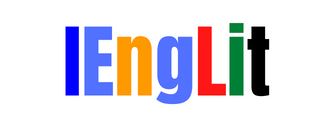Summary of the Poem:
The poem "The Blue Horse" describes a religious ceremony which the priest of god Khandoba's temple has arranged at his house for the benefit of the protagonist who has come to Jejuri to witness with his own eyes the kind of worship which is performed at the temple here. Instead of showing the actual ceremony being performed inside the temple, the priest has arranged a ceremony at his residence so that the protagonist can witness it informally and at his ease . Of course, the priest must have been paid enough money as his fee for thus obliging the protagonist.

The singer of the hymn in praise of god Khandoba is a toothless woman from whose throat the hymn issues with some difficulty as if something has gone wrong with her throat just as something may go wrong with an electric wire and may cause a fuse , with the result that the electric appliances in the house cease to function . Something is also wrong with the tongue of this toothless singer; in fact, her tongue seems to be half - burnt. Her tongue seems to be throwing out a shower of sparks, so fervent and loud is the voice in which she is singing.
A drummer is playing on a small drum to keep company with the singer. The drummer's face seems to have fallen down on itself ; and his skin , which is black , has become even blacker on account of the sun's heat to which it has remained exposed for long periods of time . He is playing on his instrument with all the force which he can command; and he reinforces the singer's hymn with great vigour though he cannot play the tune correctly. He has a step - brother who is also a member of the group singing the hymn to the tune of the drum and another musical instrument. This step - brother had had an attack of small - pox which has left its marks on his face. He is playing on a musical instrument which has just one string, and he too is playing on his instrument in a somewhat clumsy manner. The members of this group, consisting of a singer and a couple of instrumentalists, may be regarded as “God's own children” performing a religious ceremony.
The protagonist turns to the priest and says that, while the singer has been singing about the blue horse on which Khandoba had ridden away after killing the demons and after having murdered his wife, the picture on the wall of the priest's house shows a white horse. Why this contradiction? he asks. In reply, the priest says that the picture on his wall seems blue to his (the priest’s) eyes. And then the priest artificially imparts a bluish hue to the picture on the wall in order to make it look blue. In other words, he contrives to make the white horse on the wall look blue. In the meantime the drum continues to be beaten with great force.
Critical Analysis of the Poem:
Satirical Poem with An Abundant Use of Irony:
According to the legend, Khandoba had ridden away on a blue horse after killing the five demons and after having murdered his wife in a fit of rage. Kolatkar has here written a poem based on that legend. The priest of Khandoba's temple at Jejuri has arranged a religious ceremony at his residence in order to enable the protagonist to watch the ceremony informally and in all its details. The ceremony consists in offering worship to Khandoba by means of hymns sung in praise of that god. The manner in which the protagonist describes the performance of the ceremony is satirical; and an abundant use of irony has been made in the poem so that the whole ceremony is made to appear absurd and ridiculous to us.
Using Suitable Words to Create the Effect of Absurdity:
The protagonist describes the female singer and her male accompanists in a most disparaging and amusing manner. The words used in describing them are most uncomplimentary to them. The song being sung may be a religious one and therefore sacred; but the protagonist's attitude towards the singer and the instrumentalists is most derogatory. Indeed, the protagonist succeeds fully in his denigration of the musical (or unmusical) group. Here we must appreciate and admire Kolatkar's choice of words to suit his purpose. The toothless singer “shorts the circuits” in her “haywire throat”. The black skin of the drummer has become blacker because of its constant exposure to the heat of the sun. The drummer uses so much force to “thump” and “whack” the tambourine that he “goes blue in the face”. The drummer's step - brother, who has marks of small-pox on his face, “twiddles, tweaks, and twangs” on his instrument which has only one string. The alliteration (the repetition of the ‘t’ sound) is noteworthy here. The alliteration heightens the effect of absurdity which the poet has produced by his choice of words. And then comes the height of irony, with the poet saying that “God’s own children are making music here.”
Exposing the Priest's Shallowness, Ignorance and Hypocrisy; and the Farce:
The absurdity of the whole incident continues with the exposure of the shallowness, ignorance, and hypocrisy of the priest. Khandoba's horse was a blue one; but the priest, being stupid and undiscerning, had allowed the painter to draw the picture of a white horse on the wall of his house. The priest had never visualized a visitor coming and paying him money enough to witness the ceremony performed in an informal atmosphere at the priest's residence. He is made to look silly to us; and, of course, he is a funny fellow. The poet has also used an interesting phrase to convey the farcical nature of the whole ceremony being held here. The phrase is “that bit of sacred cabaret act”. And the last line of this poem completes the satirical effect of the poem: “The tambourine continues to beat its breast”.
Kolatkar's Wit and Satirical Talent Evidenced Here:
This poem shows Kolatkar's wit , his consummate use of irony , and his satirical talent. A critic expresses the view that the poem The Blue Horse tells of a “keyless passion” of a group singing the praise of Khandoba's horse, led by a toothless singer. The strange spectacle appears to be “a bit of sacred cabaret” act to the pilgrim (that is, to the protagonist).






